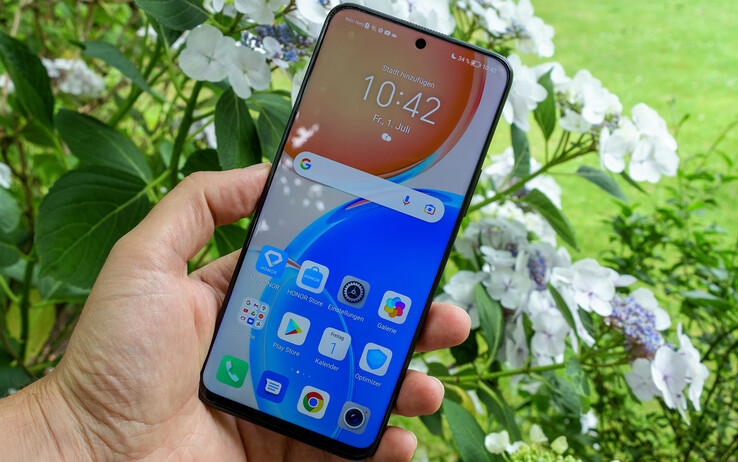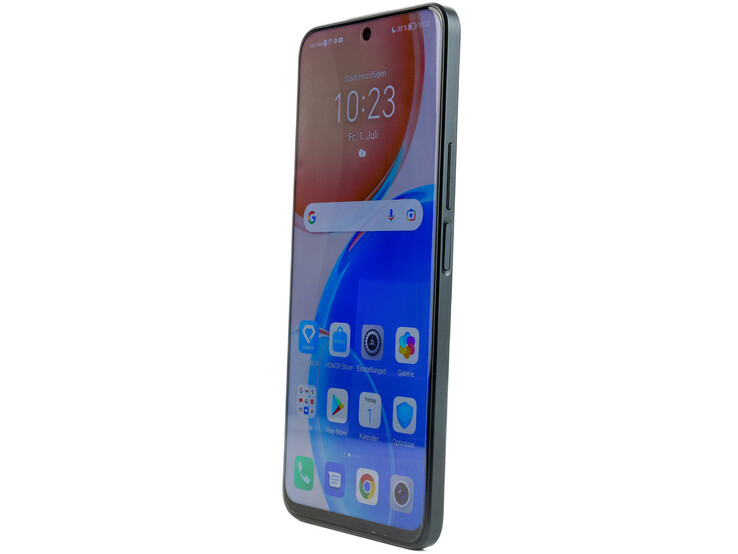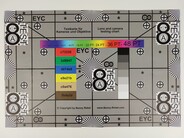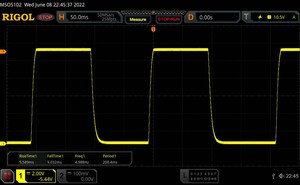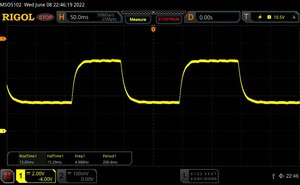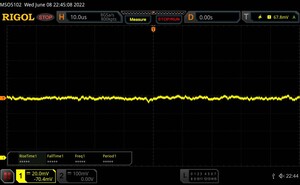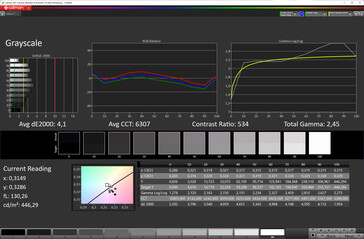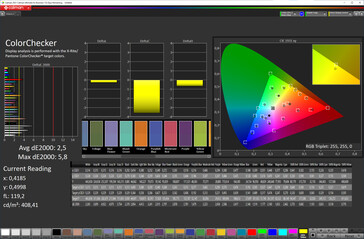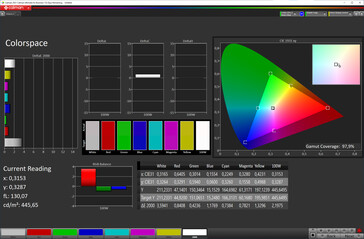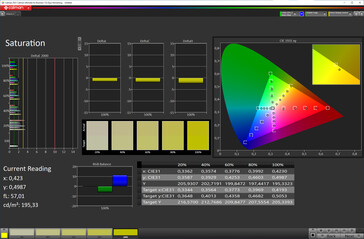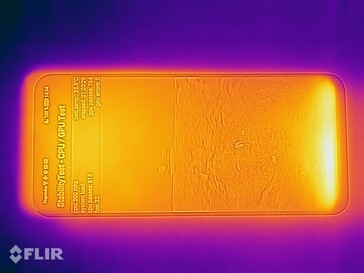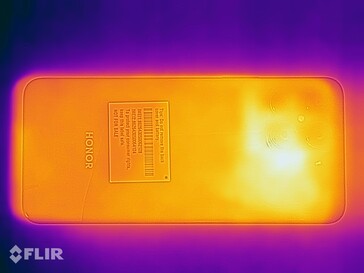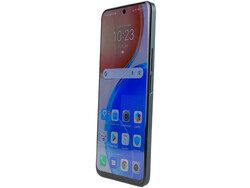Honor X8 review - Affordable mid-range smartphone with 64 MP camera
Possible competitors in comparison
Rating | Date | Model | Weight | Drive | Size | Resolution | Price |
|---|---|---|---|---|---|---|---|
| 78.5 % v7 (old) | 07 / 2022 | Honor X8 SD 680, Adreno 610 | 177 g | 128 GB UFS 2.1 Flash | 6.70" | 2388x1080 | |
| 79 % v7 (old) | 11 / 2021 | Xiaomi Redmi 10 Helio G88, Mali-G52 MP2 | 181 g | 64 GB eMMC Flash | 6.50" | 2400x1080 | |
| 76.5 % v7 (old) | 05 / 2022 | Samsung Galaxy A13 4G Exynos 850, Mali-G52 MP1 | 195 g | 64 GB eMMC Flash | 6.60" | 2408x1080 | |
| 78.8 % v7 (old) | 04 / 2022 | Realme 9i SD 680, Adreno 610 | 190 g | 128 GB UFS 2.1 Flash | 6.60" | 2412x1080 |
Case and features - Honor X8 with audio jack, but without microSD slot
The Honor X8 convinces with an appealing and straightforward design and is available in black, silver, and blue. The build quality is good and convinces with tight and even gaps; hardly any ripples can be seen even when the display is pressed hard.
The display-to-surface ratio (89%) is really good, only the bezel on the chin side is a bit thicker. Although Honor does not declare special protection against dust and water penetration, the SIM tray has a small rubber seal.
Big leaps in features are not to be expected in this price range. Thus, it is not surprising that Honor relies on a USB 2.0 port that supports OTG. Due to the large storage capacity, the lack of a microSD slot is acceptable. The X8 also has an audio jack and an FM radio receiver. However, the lack of DRM certification is not understandable.
Communication, software and operation - Only Android 11 in Honor smartphone
The Honor X8 is shipped with Google Android 11 and the in-house Magic UI 4.2 user interface. The security updates are up to March 1, 2022, at the time of the test and thus are not quite up to date. Probably, Honor aims for a semi-annual update rhythm, but the company does not want to make a concrete statement about that so far. Unfortunately, this also applies to a potential upgrade to Android 12.
The Wi-Fi 5 module of the Honor X8 works at a reasonable speed, but it is not very consistent in terms of transmission performance in combination with our reference router, the Asus ROG Rapture AXE11000. However, this does not impact everyday use negatively. The frequency coverage is limited to the necessary bands in Europe, so the X8 is not a globetrotter.
The voice quality of the Honor smartphone is good when held to the ear, but the suppression of ambient noise is rather mediocre. The user's voice reverberates a bit in speaker mode, but the intelligibility remains good. The X8 has a dual-SIM slot (2x nano-SIM) and supports VoLTE and Wi-Fi calls.
A screen protector is already applied ex-factory, which allows decent gliding properties. The fingerprint scanner is located in the power button and excels with high recognition rates. The unlocking speed is quite good; facial recognition via the front-facing camera is available as an alternative or in addition.
| Networking | |
| iperf3 transmit AX12 | |
| Xiaomi Redmi 10 | |
| iperf3 receive AX12 | |
| Xiaomi Redmi 10 | |
| iperf3 transmit AXE11000 | |
| Samsung Galaxy A13 4G | |
| Realme 9i | |
| Honor X8 | |
| iperf3 receive AXE11000 | |
| Samsung Galaxy A13 4G | |
| Realme 9i | |
| Honor X8 | |
Cameras - Honor X8 with Quad Optics
On the front of the Honor X8, a 16 MP camera is embedded in the display, which can take high-contrast and balanced selfies even in the backlight. The resulting photos are not detailed enough for prints but are really good for social media. A bokeh and beauty filter are also on board.
The nominal quad camera (aspect ratios: 4:3, 1:1, or full frame) can rely on a 64 MP lens. The photos shot with it show comparatively much dynamics, but the details in close-ups are not always captured optimally. The ultra-wide-angle is certainly not a highlight, but it shows quite a few aberrations and gets a bit blurry in the peripheral areas. The macro and depth lenses also appear on the spec sheet, but they do not offer any real added value in everyday use.
The X8 can record videos in Full HD with 30 FPS on both sides.
Image comparison
Choose a scene and navigate within the first image. One click changes the position on touchscreens. One click on the zoomed-in image opens the original in a new window. The first image shows the scaled photograph of the test device.
Main cameraMain cameraUltra wide-angle5x ZoomLow-Light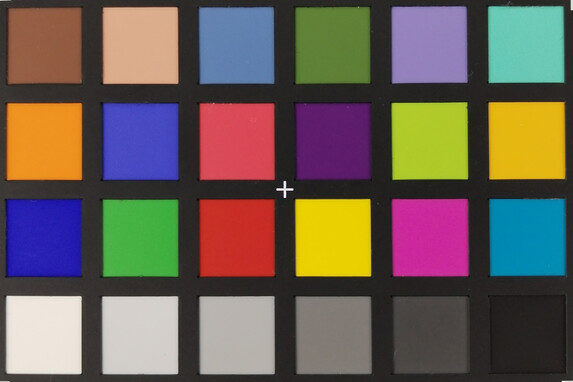
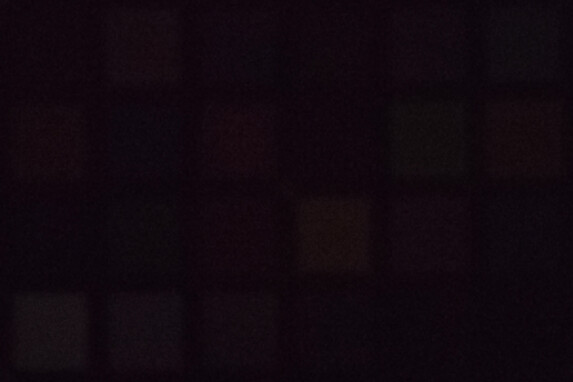
Display - 90 Hz panel in the Honor X8
The Honor X8 has a 6.7-inch TFT LCD that has a high pixel density thanks to Full HD+ resolution. The brightness of the display is on par with the competition when the ambient light sensor is deactivated. If it is activated, the brightness in the center of the screen is slightly lower at 495 cd/m², whereas the APL18 measurement is slightly higher (516 cd/m²).
Unfortunately, the increased black value (0.82 cd/m²) of the display prevents crisp contrasts. Nevertheless, the color reproduction is largely accurate. The refresh rate can be set to 60 or 90 Hz. Alternatively, the system can also switch between the two settings automatically.
| |||||||||||||||||||||||||
Brightness Distribution: 78 %
Center on Battery: 510 cd/m²
Contrast: 622:1 (Black: 0.82 cd/m²)
ΔE ColorChecker Calman: 2.5 | ∀{0.5-29.43 Ø4.78}
ΔE Greyscale Calman: 4.1 | ∀{0.09-98 Ø5}
97.9% sRGB (Calman 2D)
Gamma: 2.45
CCT: 6307 K
| Honor X8 TFT-LCD, 2388x1080, 6.7" | Xiaomi Redmi 10 IPS, 2400x1080, 6.5" | Samsung Galaxy A13 4G PLS, 2408x1080, 6.6" | Realme 9i IPS, 2412x1080, 6.6" | |
|---|---|---|---|---|
| Response Times | -71% | -50% | -20% | |
| Response Time Grey 50% / Grey 80% * (ms) | 28.94 ? | 42 ? -45% | 47 ? -62% | 34 ? -17% |
| Response Time Black / White * (ms) | 14.62 ? | 28.8 ? -97% | 20 ? -37% | 18 ? -23% |
| PWM Frequency (Hz) | ||||
| Screen | 54% | 2% | -4% | |
| Brightness middle (cd/m²) | 510 | 542 6% | 553 8% | 508 0% |
| Brightness (cd/m²) | 469 | 518 10% | 506 8% | 513 9% |
| Brightness Distribution (%) | 78 | 93 19% | 87 12% | 97 24% |
| Black Level * (cd/m²) | 0.82 | 0.22 73% | 0.44 46% | 0.6 27% |
| Contrast (:1) | 622 | 2464 296% | 1257 102% | 847 36% |
| Colorchecker dE 2000 * | 2.5 | 3 -20% | 4.64 -86% | 3.68 -47% |
| Colorchecker dE 2000 max. * | 5.8 | 6.7 -16% | 7.86 -36% | 8.36 -44% |
| Greyscale dE 2000 * | 4.1 | 1.4 66% | 5.6 -37% | 5.7 -39% |
| Gamma | 2.45 90% | 2.27 97% | 2.18 101% | 2.153 102% |
| CCT | 6307 103% | 6450 101% | 8002 81% | 7733 84% |
| Total Average (Program / Settings) | -9% /
29% | -24% /
-8% | -12% /
-7% |
* ... smaller is better
Display Response Times
| ↔ Response Time Black to White | ||
|---|---|---|
| 14.62 ms ... rise ↗ and fall ↘ combined | ↗ 5.589 ms rise | |
| ↘ 9.032 ms fall | ||
| The screen shows good response rates in our tests, but may be too slow for competitive gamers. In comparison, all tested devices range from 0.1 (minimum) to 240 (maximum) ms. » 34 % of all devices are better. This means that the measured response time is better than the average of all tested devices (20.2 ms). | ||
| ↔ Response Time 50% Grey to 80% Grey | ||
| 28.94 ms ... rise ↗ and fall ↘ combined | ↗ 13.65 ms rise | |
| ↘ 15.29 ms fall | ||
| The screen shows relatively slow response rates in our tests and may be too slow for gamers. In comparison, all tested devices range from 0.165 (minimum) to 636 (maximum) ms. » 38 % of all devices are better. This means that the measured response time is similar to the average of all tested devices (31.6 ms). | ||
Screen Flickering / PWM (Pulse-Width Modulation)
| Screen flickering / PWM not detected | |||
In comparison: 53 % of all tested devices do not use PWM to dim the display. If PWM was detected, an average of 8111 (minimum: 5 - maximum: 343500) Hz was measured. | |||
Performance, emissions and battery life
The Honor X8 relies on a Snapdragon 680 4G which can draw on 6 GB of LPDDR4x working memory. The graphics acceleration is handled by the Adreno 610 integrated into the SoC. The chipset is still up-to-date but also uses quite old Cortex cores. Honor smartphone manages an appealing system speed, however, those who like gaming will have to be content with reduced details and frame rates.
While the X8 can heat up noticeably under load, the cooling of the SoC is sufficient to ensure constant performance. The memory delivers high transfer rates, which is not a matter of course in this price range since many competitors use even older eMMC memory.
The speaker of the Honor X8 has very distinctive high mids and still sounds quite decent, but listening pleasure does not come up. The audio jack can play all the better and convinces with very low noise (SNR: 98.77 dBFS).
The 4,000 mAh battery supplies very good runtimes and easily gets the user through the day. The included 33-watt power adapter also allows recharging the Honor X8 quickly.
| GFXBench | |
| on screen Aztec Ruins Normal Tier Onscreen (sort by value) | |
| Honor X8 | |
| Xiaomi Redmi 10 | |
| Samsung Galaxy A13 4G | |
| Realme 9i | |
| Average Qualcomm Snapdragon 680 4G (4.6 - 17, n=15) | |
| Average of class Smartphone (6.2 - 166, n=211, last 2 years) | |
| 1920x1080 Aztec Ruins Normal Tier Offscreen (sort by value) | |
| Honor X8 | |
| Xiaomi Redmi 10 | |
| Samsung Galaxy A13 4G | |
| Realme 9i | |
| Average Qualcomm Snapdragon 680 4G (5.1 - 9.8, n=15) | |
| Average of class Smartphone (3.4 - 367, n=211, last 2 years) | |
| on screen Aztec Ruins High Tier Onscreen (sort by value) | |
| Honor X8 | |
| Xiaomi Redmi 10 | |
| Samsung Galaxy A13 4G | |
| Realme 9i | |
| Average Qualcomm Snapdragon 680 4G (2.7 - 11, n=15) | |
| Average of class Smartphone (0.85 - 144, n=212, last 2 years) | |
| 2560x1440 Aztec Ruins High Tier Offscreen (sort by value) | |
| Honor X8 | |
| Xiaomi Redmi 10 | |
| Samsung Galaxy A13 4G | |
| Realme 9i | |
| Average Qualcomm Snapdragon 680 4G (1.4 - 3.3, n=15) | |
| Average of class Smartphone (1.2 - 129, n=211, last 2 years) | |
| Honor X8 | Xiaomi Redmi 10 | Samsung Galaxy A13 4G | Realme 9i | Average 128 GB UFS 2.1 Flash | Average of class Smartphone | |
|---|---|---|---|---|---|---|
| AndroBench 3-5 | -57% | -58% | 2% | -28% | 132% | |
| Sequential Read 256KB (MB/s) | 926.58 | 321.3 -65% | 308.5 -67% | 976 5% | 761 ? -18% | 2223 ? 140% |
| Sequential Write 256KB (MB/s) | 510.25 | 178 -65% | 236.8 -54% | 719 41% | 296 ? -42% | 1838 ? 260% |
| Random Read 4KB (MB/s) | 189.38 | 100.7 -47% | 104.4 -45% | 176.8 -7% | 154 ? -19% | 295 ? 56% |
| Random Write 4KB (MB/s) | 195.75 | 95.8 -51% | 67.3 -66% | 137.4 -30% | 130.4 ? -33% | 335 ? 71% |
Temperature
(±) The maximum temperature on the upper side is 40 °C / 104 F, compared to the average of 35.2 °C / 95 F, ranging from 21.9 to 247 °C for the class Smartphone.
(+) The bottom heats up to a maximum of 36.7 °C / 98 F, compared to the average of 34 °C / 93 F
(+) In idle usage, the average temperature for the upper side is 30.9 °C / 88 F, compared to the device average of 32.9 °C / 91 F.
Speaker
Honor X8 audio analysis
(+) | speakers can play relatively loud (91 dB)
Bass 100 - 315 Hz
(-) | nearly no bass - on average 30.5% lower than median
(+) | bass is linear (5.9% delta to prev. frequency)
Mids 400 - 2000 Hz
(±) | reduced mids - on average 5.2% lower than median
(+) | mids are linear (6% delta to prev. frequency)
Highs 2 - 16 kHz
(±) | higher highs - on average 5.1% higher than median
(±) | linearity of highs is average (7.1% delta to prev. frequency)
Overall 100 - 16.000 Hz
(±) | linearity of overall sound is average (20.2% difference to median)
Compared to same class
» 33% of all tested devices in this class were better, 9% similar, 58% worse
» The best had a delta of 11%, average was 35%, worst was 134%
Compared to all devices tested
» 51% of all tested devices were better, 8% similar, 40% worse
» The best had a delta of 4%, average was 24%, worst was 134%
Realme 9i audio analysis
(+) | speakers can play relatively loud (88 dB)
Bass 100 - 315 Hz
(-) | nearly no bass - on average 30.4% lower than median
(±) | linearity of bass is average (9.4% delta to prev. frequency)
Mids 400 - 2000 Hz
(±) | higher mids - on average 7.7% higher than median
(+) | mids are linear (6.9% delta to prev. frequency)
Highs 2 - 16 kHz
(+) | balanced highs - only 3.3% away from median
(+) | highs are linear (4.3% delta to prev. frequency)
Overall 100 - 16.000 Hz
(±) | linearity of overall sound is average (21.4% difference to median)
Compared to same class
» 41% of all tested devices in this class were better, 8% similar, 51% worse
» The best had a delta of 11%, average was 35%, worst was 134%
Compared to all devices tested
» 59% of all tested devices were better, 7% similar, 34% worse
» The best had a delta of 4%, average was 24%, worst was 134%
Battery life
| Battery Runtime - WiFi Websurfing | |
| Average of class Smartphone (12.1 - 54.1, n=211, last 2 years) | |
| Realme 9i | |
| Samsung Galaxy A13 4G | |
| Xiaomi Redmi 10 | |
| Honor X8 | |
Pros
Cons
Verdict - Good midranger with small deficits
Technically, the Honor X8 does a lot right and offers a very attractive price-performance ratio. The 90 Hz panel has decent brightness, the memory size is large and it's working fast, the audio jack has a low-noise playback, the battery delivers good runtimes and fast charging is also included.
The Honor X8 is definitely a technically good smartphone, but the unclear update policy is annoying
5G is still not mandatory in this price range, and Honor is not alone. The situation is different for the DRM certification, which would have been a must. The unclear update supply policy is also annoying, especially since the Honor smartphone was still shipped with Android 11. At least Android 12 should be available. As with all new smartphones from Honor, Google services are once again included in the X8.
Alternatives are the realme 9i or the Samsung Galaxy A13.
Price and availability
The price of the Honor X8 has already dropped to 210 Euros in the Honor store at the time of the test and is offered with further discounts in kind. Alternatively, it is also available on Amazon or Otto available
Honor X8
- 07/12/2022 v7 (old)
Daniel Schmidt




